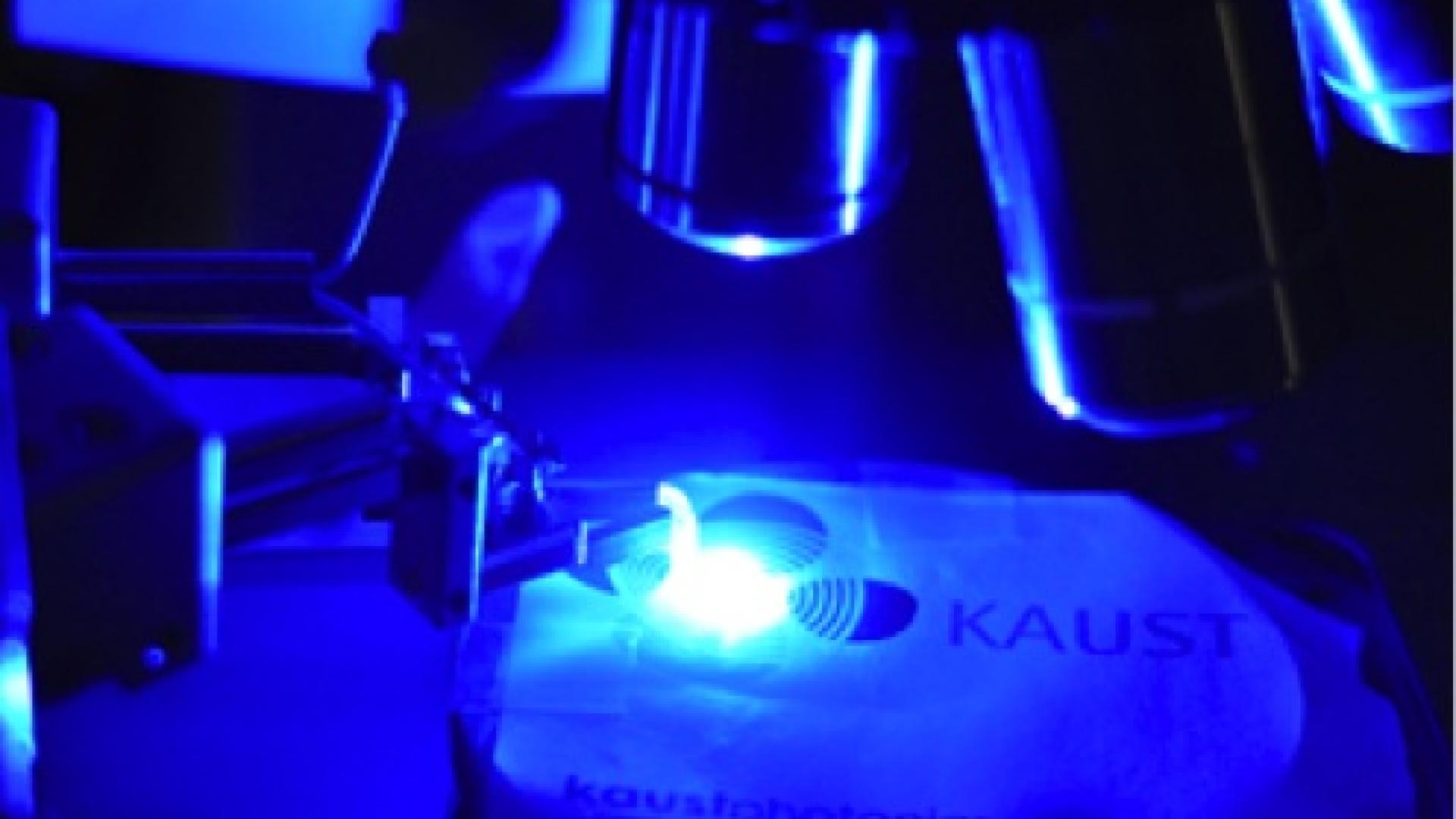© KAUST 2015
The International Year of Light in 2015 marks 1,000 years since Ibn Al-Haytham's pioneering work on optics, Kitab al-Manazir. Since then, light has grown ever more intrinsic in our lives, from fiber optic cables that are the conduit of modern communication to the blinking LEDs that inform and entertain us. Now research from the Division of Physical Science and Engineering at KAUST is contributing to the next generation of lighting technology, which promises to continue transforming our world.
For most of human history, the light was produced from heat — candles, lanterns, or open fires. The invention of the electric light bulb has been a useful tool for more than a century, but the technology is energy intensive. While the advent of light-emitting diodes (LED) has changed the picture, KAUST’s research is going beyond this stage to develop solid-state lighting solutions based on lasers.
LEDs are solid-state devices that produce light by using electricity to recombine electrons with holes, which are positively charged particles, in a semiconductor. This releases a certain amount of energy as light, the color of which depends on the material of the semiconductor. For instance, gallium nitride-based LEDs can reach higher efficiencies than older technologies by producing visible light directly, instead of through heat or fluorescence.
“Lights using semiconductor lasers can reach very high efficiencies,” says Boon Ooi, the head of the laboratory. “The typical efficiency of LEDs is 40-50 percent. With lasers, we can hit 70 percent or beyond.” A laser-based light would need only 4W of power for the same luminosity as a standard 60W incandescent bulb. The equivalent fluorescent light draws 14W — even a LED consumes more than twice the energy of a laser-based light.
Read the full article


